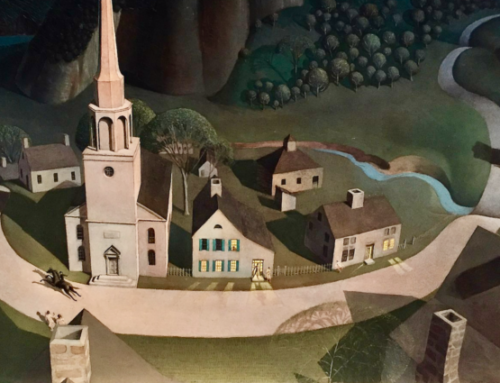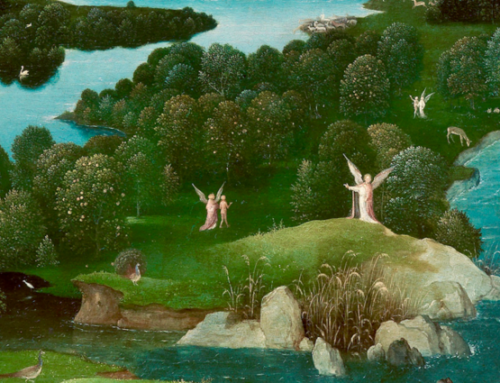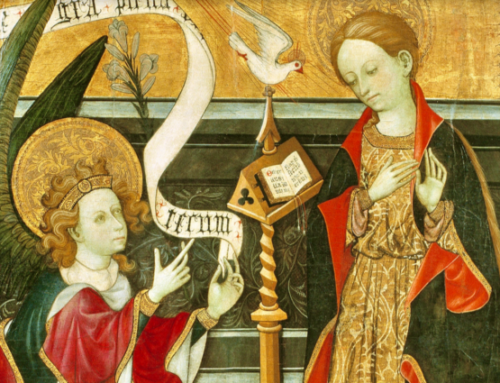
In 1939, four years after the publication of Burnt Norton, T.S.Eliot worried that he would write no more poetry. Increasingly interested and involved in the production of his verse drama, he attempted another poem using fragments of Burnt Norton and written in the same style.
In 1937 Eliot had visited East Coker—a typical English village set amongst the rolling hills of Somerset, just a few miles from the market town of Yeovil. The quiet parish features a fifteenth-century manor house next to a church dedicated to St. Michael that dates to the twelfth century. St. Michael’s is separated somewhat from the village, and access is along a lane cut deeply into the hill and hedge rows. Eliot describes his own pilgrimage to the church,
… Now the light falls
across the open field, leaving the deep lane
shuttered with branches, dark in the afternoon
where you lean against a bank while a van passes
and the deep lane insists on the direction into the village.
The scene, like so much of rural England, is remarkably unspoiled, and visiting on a summer afternoon (as Eliot did) brings you to rest on the lawn of the hill beside the church. There you can look across the fertile fields and imagine the quaint and ancient scene Eliot conjured up as his homage to Grey’s Elegy Written In a Country Churchyard.
If you do not come too close, if you do not come too close,
On a summer midnight, you can hear the music
Of the weak pipe and the little drum
And see them dancing around the bonfire
The association of man and woman
In daunsinge, signifying matrimonie—
A dignified and commodious sacrament.
Two and two, necessarye coniunction,
Holding eche other by the hand or the arm
Whiche betokeneth concorde. Round and round the fire
Leaping through the flames, or joined in circles,
Rustically solemn or in rustic laughter
Lifting heavy feet in clumsy shoes,
Earth feet, loam feet, lifted in country mirth
Mirth of those long since under earth
 Eliot visited the village because it was from East Coker that his ancestor, Andrew Eliot, emigrated to the New World in 1669. The lines, “in daunsing, signifying matrimonie—a dignified and commodious sacrament, necessarye coniunction, holding echo other by the hand or the arm which betokenth concorde,” were taken from a sixteenth-century volume, The Boke Called the Governour, by an ancestor, Sir Thomas Elyot.
Eliot visited the village because it was from East Coker that his ancestor, Andrew Eliot, emigrated to the New World in 1669. The lines, “in daunsing, signifying matrimonie—a dignified and commodious sacrament, necessarye coniunction, holding echo other by the hand or the arm which betokenth concorde,” were taken from a sixteenth-century volume, The Boke Called the Governour, by an ancestor, Sir Thomas Elyot.
His visit, therefore, like Grey’s poem, is Eliot’s own pondering on his ancestry, his destiny, and his ultimate mortality. His opening lines—“In my beginning is my end”—reverses the motto of the tragic Mary Queen of Scots who wrote, “In my end is my beginning.”
Fifty-two-years-old the year the poem was published, Eliot, like Dante, is in the middle part of his life. He considers the twenty years between the war “largely wasted,” and in the second section he remarks that “the poetry does not matter.” The old men have disappointed, and approaching old age is not a time of wisdom, but boredom. Indeed, in the third section, which can sound like it wallows in bitterness, Eliot examines the vanity of the world’s accomplishments and ambitions.
O dark dark dark. They all go into the dark,
The vacant interstellar spaces, the vacant into the vacant,
The captains, merchant bankers, eminent men of letters,
The generous patrons of art, the statesmen and the rulers,
Distinguished civil servants, chairmen of many committees,
Industrial lords and petty contractors, all go into the dark,
And dark the Sun and Moon, and the Almanach de Gotha
And the Stock Exchange Gazette, the Directory of Directors,
And cold the sense and lost the motive of action.
And we all go with them, into the silent funeral.
Eliot’s visit to his ancestral home, however, is not wasted. Although he experiences and explains the vanity of worldly ambition, he turns from the vanity into the profound observations of St. John of the Cross. The way forward for Dante in the middle way of life was to descend through hell and purgatory to the final paradise. Eliot, paraphrasing John of the Cross, teaches the same lesson:
To arrive where you are, to get from where you are not,
You must go by a way wherein there is no ecstasy.
In order to arrive at what you do not know
You must go by a way which is the way of ignorance.
In order to possess what you do not possess
You must go by the way of dispossession.
In order to arrive at what you are not
You must go through the way in which you are not.
And what you do not know is the only thing you know
And what you own is what you do not own
And where you are is where you are not.
Eliot’s way would take that same via negativa. After his separation from his unstable wife, Vivienne, in 1933, he lived a solitary life, first in various lodgings and the homes of friends, then from 1946 to 1957 sharing a flat with his friend John Hayward. The austerity of his personal life and his commitment to his Anglo-Catholic religion became his own path of humility—his own path downward which became his spiritual ascent.
In East Coker, Eliot meditates on the cycle of life—on birth, death, rebellion and return, and a visit to the village church sums up the cycle as one regards the simple plaque on the wall which reads: “‘In my beginning is my end.’ Of your kindness pray for the repose of the soul of Thomas Stearns Eliot, Poet. ‘In my end is my beginning.’”
Books on the topic of this essay may be found in The Imaginative Conservative Bookstore.







Leave A Comment